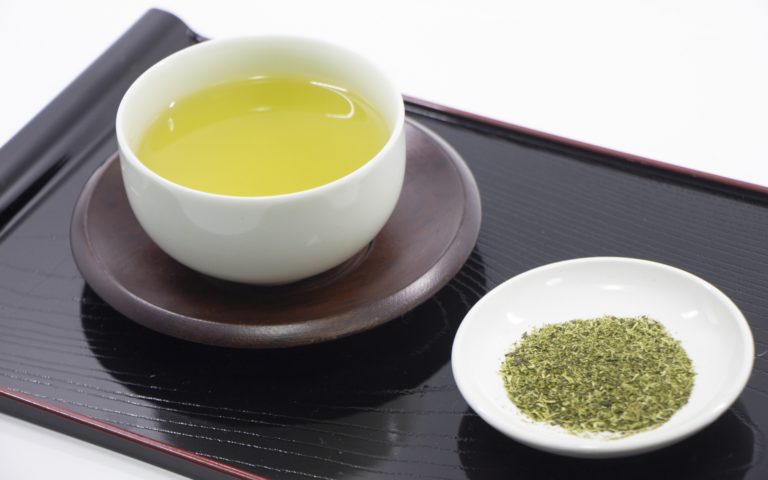
What is Japanese Tea
Japanese drink Japanese tea everyday. Many Japanese restaurants serve tea for free instead of a cup of water. It can be said that Japanese tea is definitely part of our life and we enjoy numerous variations of them. What is more interesting is that a certification of Japanese tea instructor exist. Japanese are Japanese tea freak…! We would like to introduce the main varieties of Japanese tea and show how this tea world is deep and interesting.
Variety of Japanese Tea
Tea leaf can be processed into 3 types, Ryokucha tea type, Oolong tea type, and Black tea type. From the Ryokucha tea type, a number of Japanese tea are made by different production methods and techniques. Below are the main tea that Japanese are familiar with.
Gyokuro (First grade green tea)
Gyokuro is made from tea leaves blocked from the sunlight from about 3 weeks before picking. Gyokuro is considered as the first grade green tea due to its original sweetness and rich flavor.
Sencha (Middle grade green tea)
Sencha is graded as a middle class green tea. It is made from tea leaves not blocking from the sun at all. We can enjoy a bit of astringent flavor and refreshing scent at the same time. More than 80% of the tea in Japan is said to be Sencha.
Bancha (Lower grade green tea)
Bancha is considered as lower grade tea because it is made from too mature tea leaves of Sencha or other unchosen tea leaves. Bancha, however, has its strong flavor which is loved by many Japanese. Generally, it is also cheaper than other teas.
Shincha (Green tea made from the first picked tea leaves of the year)
Shincha is made from the first picked tea leaves of the year and I personally love this so much! Many Japanese feel the beginning of summer by this Shincha. It is less bitter than other Japanese tea.
Hojicha (Roasted green tea)
Hojicha is brown tea made from roasted tea leaves. Usually Sencha and Bancha tea leaves are roasted for a long time until it becomes brown. It does not have bitterness and has a strong refreshing taste instead. Hojicha is loved by many Japanese and very popular among children.
Genmaicha (Green tea with roasted brown rice)
Genmaicha is made from 50% of steamed and roasted brown rice and 50% of Sencha or Bancha. Since it is using less green tealeaves than other teas, it is not bitter. Genmaicha is light and refreshing.
Mugicha (barley tea)
Mugicha or barley tea or wheat tea is made from roasted barley. It has a toasty taste. Mugicha can be brewed in cold water instead of hot water so it is wildly known as summer tea.
Tea with function claims
From around 2018, tea with functional claims have become very popular among Japanese who are concerned about being healthy. It is sold as a plastic bottled tea and not as tea leaves. Most of them claim that the tea absorbs the fat.
How to drink
Japanese enjoy the balance of Japanese tea’s bitterness, astringency, sweetness, and umami flavor. Below is the main way to maximize the flavor of tea leaves.
Tea leaves
- Boil water and keep it warm
- Pour boiled water into tea bowls. We can measure the required amount of water and make it to a suitable temperature by this procedure. This also makes the tea cups warm.
- Put a spoonful tealeaves (per person) into a teapot.
- Put the boiled water into the teapot from the tea bowls.
- Wait about 1~2 minutes. Don’t shake the teapot. It is important to wait still.
- Pour the tea into the tea bowls. Here, don’t pour it one by one. It is important to fill the tea cups evenly little by little into each cups so the taste can be even.
- Make sure to serve all the tea in the teapot so you can have a delicious second round of Japanese tea.
Plastic bottled tea
- Of course, there are lots of manufactured tea as well. As you may see Japanese tea in a plastic bottle in your own country, plastic bottled tea is also sold everywhere in Japan. You’ll see many selections!
Summary
Japanese tea is endless in its collections and flavor. Most of them are made from tea leaves and some are made from wheat or mixture of them. Japanese always drink Japanese tea with Japanese dishes which really goes well together. We would love you to find your favorite one.